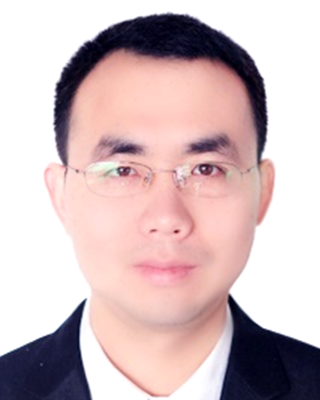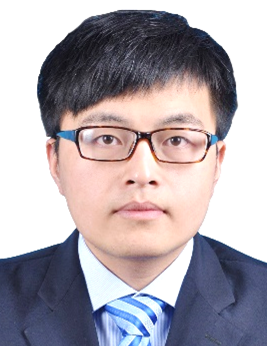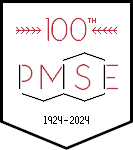Chemistry of Materials Lectureship and Best Paper Award
The Chemistry of Materials Lectureship and Best Paper Award honors the authors of an article published in the prior year that highlights their collaborative efforts and has outstanding influence across the field of materials chemistry .
2022 Award Winners
The 2022 award winners Meng Li and Dr. Baolin Guo from Xi’an Jiaotong University (XJTU) and the Frontier Institute of Science and Technology (FIST). The award article is “Two-Pronged Strategy of Biomechanically Active and Biochemically Multifunctional Hydrogel Wound Dressing To Accelerate Wound Closure and Wound Healing”, which describes hydrogels which can assist wound closure and also incorporate biochemical functions, creating a multi-functional approach to wound management.
Dr. Baolin Guo
Xi’an Jiaotong University | XJTU · Frontier Institute of Science and Technology (FIST)

Baolin Guo received his PhD degree in 2011 from the Royal Institute of Technology (KTH) under the supervision of Professor Ann-Christine Albertsson. He is now a professor at State Key Laboratory for Mechanical Behavior of Materials, and the Frontier Institute of Science and Technology (FIST), Xi’an Jiaotong University. He has published more than 100 papers (citation >11000 times) with him as the first author and corresponding author, and he owns 8 patents. His research focuses on biomedical polymers including degradable conductive polymers for tissue engineering, multifunctional hydrogels for wound healing, rapid hemostasis materials, tissue regeneration, hydrogel adhesives, human motion sensing device and controlled drug delivery system.
Meng Li
Xi’an Jiaotong University | XJTU · Frontier Institute of Science and Technology (FIST)

Meng Li received his Bachelor and Master’s degrees in medicinal chemistry from Lanzhou University, China in 2011 and 2015, respectively. He is currently a PhD candidate at the Frontier Institute of Science and Technology, Xi’an Jiaotong University. He majored in biomedical engineering in the research group of Professor Baolin Guo from 2018. His main research interests are the design and synthesis of biomaterials for hemostasis and tissue repair.
Sponsored By

Award Details
$2500 award to be shared between one or more lead authors is permitted. In addition, up to $2000 for travel and lodging costs may be shared by up to two of the winning article’s co-authors to attend the award symposium.
Nominations
Authors of a paper published in Chemistry of Materials can self-nominate their article for consideration for this award. Nomination packages should follow package submission guidelines.
Award Selection
The winning article will be selected by a committee of five individuals, consisting of the Editor-in-Chief or her designee from the Associate Editors of the journal, two Editorial Advisory Board members from the journal as appointed by the Editor-in-Chief, and the Chair and Past-Chair of the Division hosting the Award in a particular year.
Past Recipients
Nominations and Award Process
Rules of Eligibility
Nominees are authors from the preceding past two years between January 1 and December 31. When sponsored by the PMSE Division, only soft matter papers are within scope of nominations. The main goal is to emphasize the importance of, and celebrate the contributions of, co-authors.
Nominations Package
The authors of a paper published in Chemistry of Materials can self-nominate their article for consideration for this award. The nomination package should include:
(1) a nomination letter written and signed by all co-authors
describing the role of the team in the research described in the paper;
(2) CV of the lead author and the corresponding author;
(3) a copy of the article;
(4) indication of the division the paper is affiliated;
(5) An award citation of 15 words or less.
Please submit your nomination to: https://acspubs.formstack.com/forms/2018_cm_lectureship
The deadline is January 31 for papers published in the preceding year dated between January 1 and December 31.
Award Selection Process
The winning article will be selected by a committee of five individuals, consisting of the Editor-in-Chief or her designee from the Associate Editors of the journal, two Editorial Advisory Board members from the journal as appointed by the Editor-in-Chief, and the Chair and Past-Chair of the Division hosting the Award in a particular year.
Award Announcement and Nature
The wining papers should be announced on or before April 30.
The recipients shall attend the Fall National ACS Meeting’s “Chemistry of Materials Lectureship and Best Paper Award Symposium”. This symposium shall be held the same year the winner is selected and will be hosted alternately by the PMSE and Inorganic Chemistry Divisions. This symposium will feature two award presentations by co-authors of the winning article, and talks by several invited speakers chosen by the Editor-in-Chief with the approval of the Divisions’ Chairs. When the symposium is hosted by PMSE, the award plaque will be presented at the PMSE Award Ceremony and Reception.
About Our Sponsor
Chemistry of Materials is devoted to the publication of original contributions on forefront, fundamental research at the interface of chemistry, chemical engineering, and materials science. Both theoretical and experimental studies which focus on the preparation or understanding of materials with unusual or useful properties are relevant.
Among the research areas of interest are solid-state chemistry, both inorganic and organic, and polymer chemistry, especially as directed to the development of materials with novel and/or useful optical, electrical, magnetic, catalytic, and mechanical properties, among others. Also of interest are fundamental issues relating to the fabrication and processing of electronic, magnetic, or optical materials and devices, including the generation of thin films by chemical vapor and solution deposition.
Other appropriate topics include the design, synthesis, investigation, and application of polymeric and molecular precursors to solid-state inorganic materials (including sol-gel chemistry and polymer pyrolysis) and the preparation and study of biomaterials, nanomaterials, composites, catalysts, liquid crystals, coatings, thin films and interfaces, and self-organized molecular assemblies.
Full List of Award Winners
2020 – Present
2022: Meng Li and Baolin Guo, Xi’an Jiaotong University | XJTU · Frontier Institute of Science and Technology (FIST)
Two-Pronged Strategy of Biomechanically Active and Biochemically Multifunctional Hydrogel Wound Dressing To Accelerate Wound Closure and Wound Healing
2021: Shruti Hariyani, University of Houston, and Jakoah Brgoch, University of Houston
Local Structure Distortion Induced Broad Band Emission in the All-Inorganic BaScO2F:Eu2+ Perovskite
2020: Anthony D’Angelo, Ionic Materials Inc., and Matthew Panzer, Tufts University
Design of Stretchable and Self-Healing Gel Electrolytes via Fully Zwitterionic Polymer Networks in Solvate Ionic Liquids for Li-Based Batteries
2016 – 2019
2018: Darren Lipomi, Mohammad A. Alkhadra, and Samuel E. Root. “Quantifying the Fracture Behavior of Brittle and Ductile thin Films of Semiconducting Polymers,” Chemistry of Materials.
2017: Zhen Li, Mengjin Yang, Ji-Sang Park, Su-Huai Wei, Joseph J. Berry, and Kai Zhu. Chemistry of Materials.
2016: 28 (1), pp 284–292: “Stabilizing Perovskite Structures by Tuning Tolerance Factor: Formation of Formamidinium and Cesium Lead Iodide Solid-State Alloys”.




